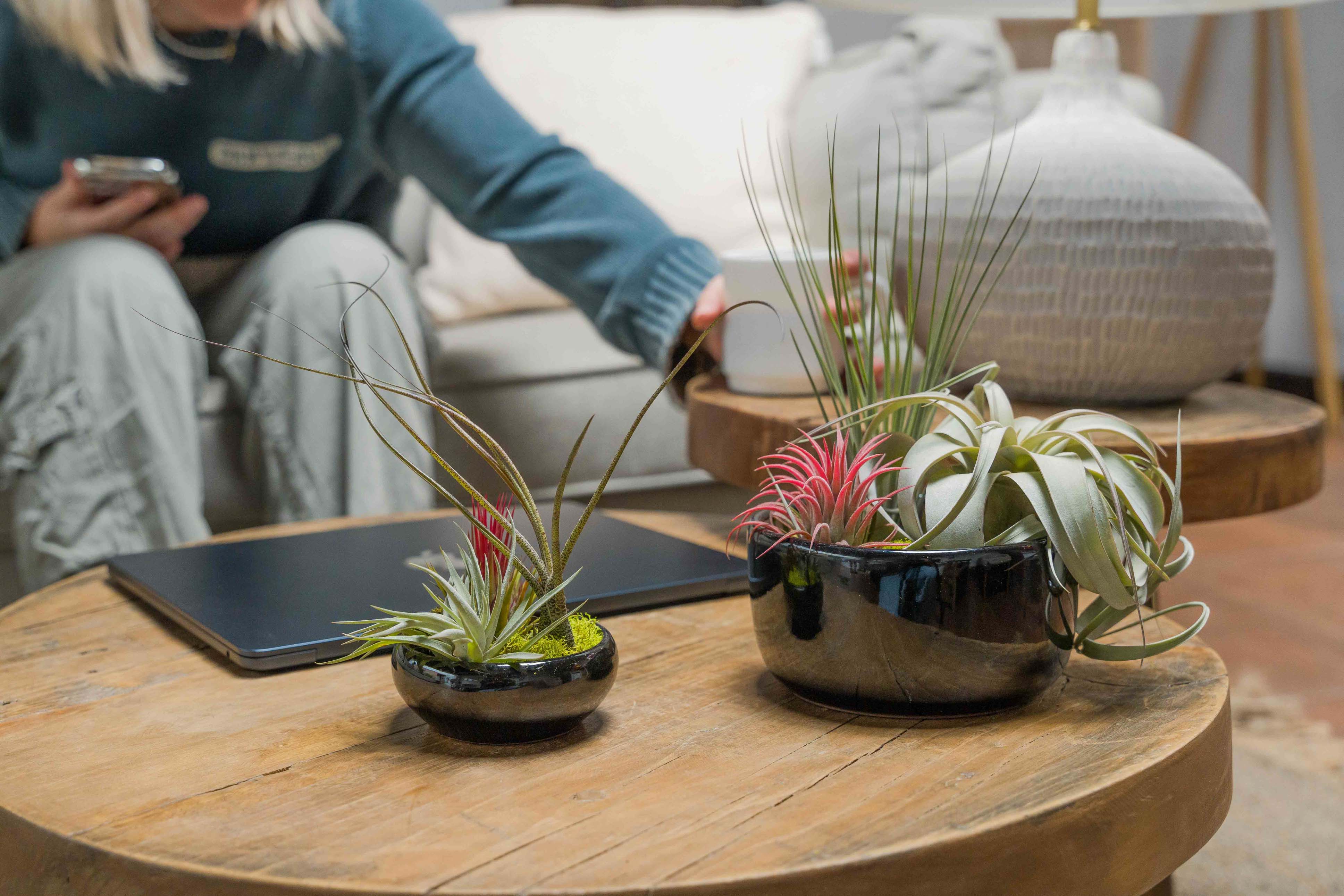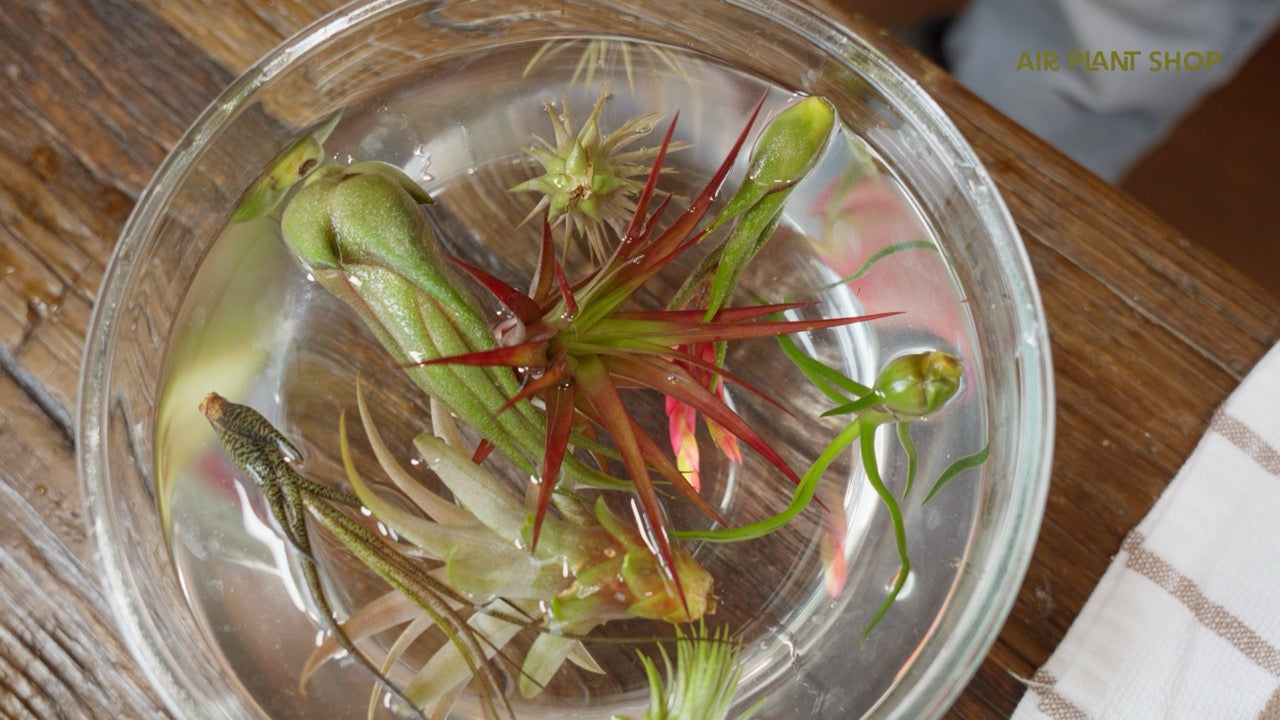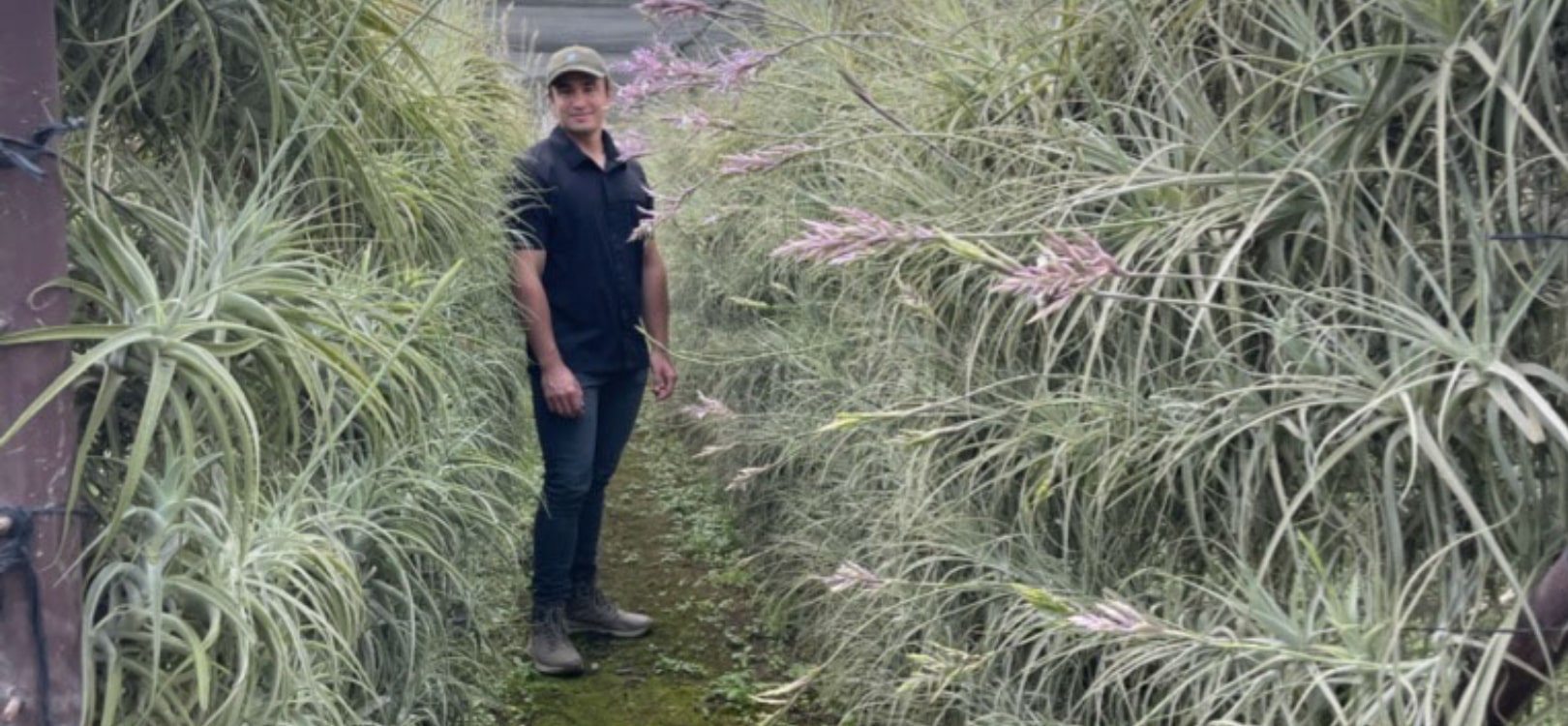Plant lovers know the immense satisfaction of when their love and hard work pays off and their plant babies finally bloom! Tillandsia, also known as air plants, are no different. As members of the angiosperms (meaning flowering plant) family, all air plants will produce blooms as part of their life cycle. Tillandsia do not bloom until they reach maturity and, thus, are ready to produce off-spring or pups. Since tillandsia do not have any age characteristics that can be seen with the naked eye, patience is key! That being said, there are actions you can take to guarantee your plant reaches maturity and is healthy enough to bloom.
As any mother knows creating offspring takes lots of energy! Below are some ways to maximize your air plant’s energy to help achieve the beautiful blooming process.
Fertilizing

Fertilizing your tillandsia will help ensure they are receiving all the nutrients they need – especially because it is not always clear what vitamins and minerals are in the water you use to hydrate your air plants. Make sure you use fertilizer that is specifically formulated for tillandsia such as our 12 Month Supply Grow More Air Plant Fertilizer. To use our Grow More Air Plant Fertilizer, simply add 1/4 teaspoon to a gallon of water and soak your air plants for 20 to 40 minutes once per month! Tillandsia do not receive nutrients from their roots in soil which is why we use a special type of nitrogen in the tilly fertilizer so they are able to absorb and convert it into usable energy.
A word of caution: do not over fertilize your air plants. It can cause the plants to suffer from nitrogen burn and this will cause them to die!
Proper Lighting

Displaying tillandsia in your home is an excellent way to bring the outdoors inside, however, they still need light as if they were outside – we recommend daily indirect light (unfortunately, windowless bathrooms and other windowless rooms are not optimal for your air plants to live). Bringing your air plants indoors may result in them not receiving enough sunlight to produce the energy needed to bloom which is why you need to be extra conscious of where you place your air plants inside! Additionally, tillandsia can sunburn, just like people, so it’s important to provide a good balance of direct and indirect light – mid-day sun can be too strong and burn your air plants. One to three hours of direct morning or evening sun is great for tillandsia since, typically, at this time of day the suns rays are not as strong. Otherwise, consistent filtered light is great as well. A good filtered light location would be somewhere near a window where the sunlight is getting to your tillandsia but not directly shining on it such as on a coffee table or side table near a window or on a kitchen counter or shelf!
Looking for post-bloom air plant care tips? Check out our blogs, "How to Trim Your Air Plant" and "What Happens After Blooming?". See stunning Tillandsias in bloom on our Facebook, TikTok, and Instagram!










Thank you for the great info!!
Leave a comment